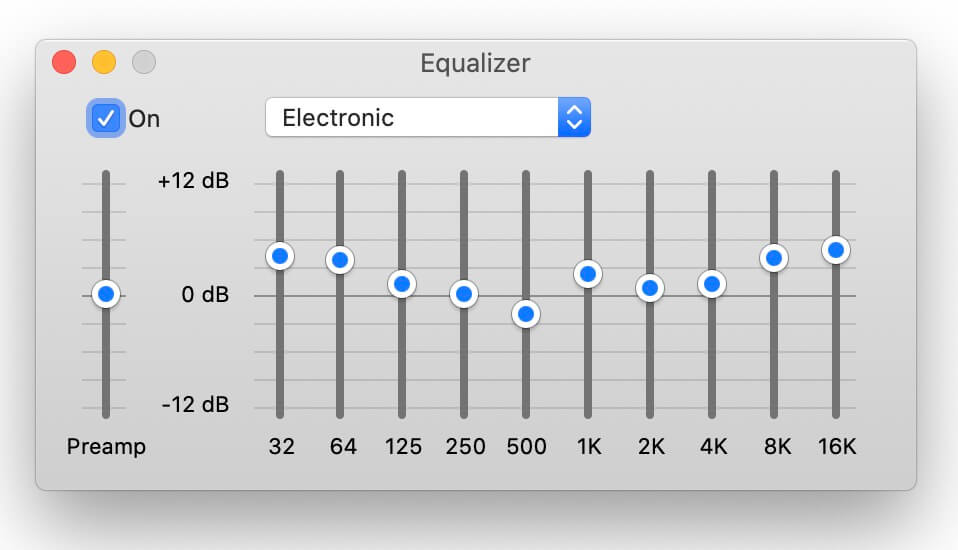

With parametric subtractive EQ, cuts work better with narrower Q settings (bandwidth). Subtractive EQĬutting frequencies is often about fixing, whether it be cleaning up mud in the low range or lower midrange with high-pass filters, reducing midrange conflicts between instruments to open up a mix, or filtering highs to bandwidth limit and make room for sparkle in other areas. In other words, please refer to item one in all cases! 3. High End Boostsġ0,000 Hz and above can add air and sheen to a track, but if overdone can make the mix unpleasant to listen to. Upper midrange in the 5,000-9,000 range can add bite to a track but may also add harshness. Midrange boosts in the 1,000-4,000 Hz range can add presence, bringing a track forward and defining it, but may add a nasal, honking quality if overdone. Lower-mid boosts in the 200-600 Hz range can add warmth to a track when needed, such as a thin vocal track, but may also bring unwanted muddiness to the picture. Low boosts in the 40-100 Hz range add that boom on the bottom, which is especially pertinent for modern kick, bass, and tom sounds. Still, adding a frequency is sometimes what is needed to bring a track forward in the mix, differentiating it and bringing clarity to the sonic landscape. If so, we may need to cut at 150 on another EQ band to compensate. Above that we may also be increasing lower midrange in the 125-200 Hz area, depending on the Q of the boost. This tends to become more pronounced by large boosts.īoosts also may bring up adjacent frequencies above or below the center let’s say we have a bell boost with a center frequency of 100 Hz. Also, most equalizers alter the harmonic balance such that subtle phase anomalies may occur. However, what is true is that an EQ boost adds volume to a signal and thus must be managed to avoid distortion. Boosting is not inherently better or worse than subtractive EQ (cutting). Additive EQĪdditive EQ is boosting a frequency or frequencies. Also, the opposite of this is true as well don’t turn a knob and make it sound worse! 2. I know this may sound facetious, but really this is pretty much what equalizing is all about, don’t you think? Of course there is more to it than this, but let’s hold this principle as a workable bottom line.
Sound equalizer how to#
If you’re starting to experiment with how to use equalizer in your production, here are some tried and true equalization strategies: Every note an instrument plays has a fundamental frequency, and overtones above it, which give it a specific timbre and make it recognizable. If you’re stepping into music production for the first time, you might be wondering, “What does EQ stand for?” In music, EQ stands for Equalization, which is a plug-in intended to manipulate the frequency content of your recordings, and help all of the elements of your production work together sonically. For some, it is enough to listen to music at standard settings, while others are better off adjusting its sound using an equalizer.The following information on EQ is excerpted from the Berklee Online graduate course Advanced Mixing Techniques. Each person's hearing perceives different frequencies differently. But it copes with basic tasks successfully.

Sound equalizer professional#
Of course, this application is not suitable for professional audio work. Such tools allow you to adjust the vibration of sound waves and get rid of unnecessary noise. Most often, using the equalizer, they add or subtract bass, make vocals less harsh or clearer, remove unpleasant overtones in the upper range: for example, the clatter of cymbals, or, conversely, add air recordings by carefully adding high frequencies. Emphasize or shade some frequencies to your liking. To make the sound of old or poor quality recordings clearer. Correct the imperfections of the room in which the acoustics are located. Correct the sound of the speaker system or headphones. In modern home audio equipment and digital players, equalizers allow you to do a number of things.


 0 kommentar(er)
0 kommentar(er)
